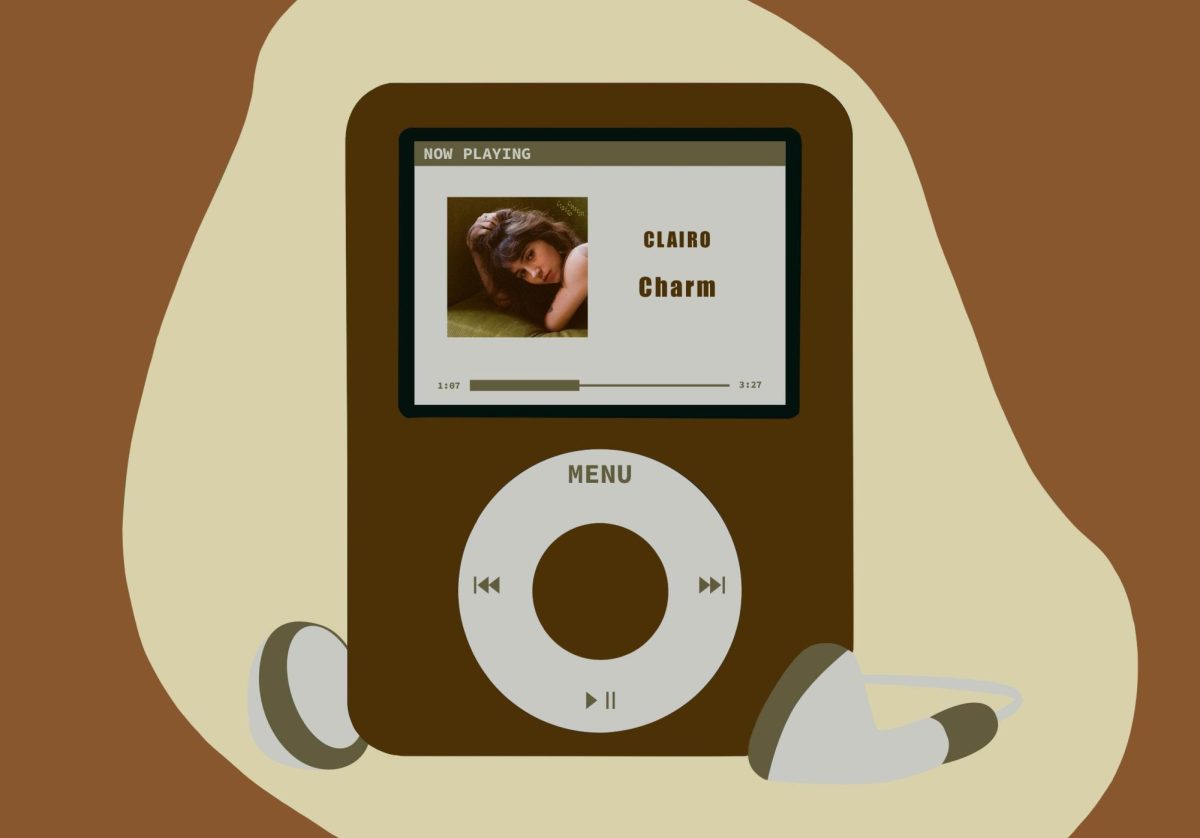Women bopping their heads to the sounds of Bruce Springsteen songs served White Castle hamburgers on silver platters. Balding, middle-aged men in brand-new black leather jackets shuffled in with strollers stuffed with sleeping babies, leggy blonde wives by their side. Women with glasses and perfect hair pushed their way into the opening night of the Springsteen: Troubadour of the Highway exhibit at the Frederick R. Weisman Art Museum wearing white shirts with hand-made lettering, “Bruce Tramp” emblazoned across their chests.
There were also punk rock girls wearing Ramones-embroidered leather jackets, strutting past mounds of cheese cubes on the buffet table. These girls passed right in front of a white-haired lady with cow-skin cowboy boots.
This exhibit was for the fans. It seemed like less of an art exhibit than an excuse for throwing a pre-party for Springsteen’s Sept. 30th concert. Attendees were packed in tight, and everyone had one thing in common: They loved Bruce Springsteen. They loved his music, his image and his message.
The exhibit is a kind of display that, for fans, shares treasures – artifacts, even. There is a table where viewers can take a seat and listen on headphones to any of five albums. At the same time, they can look at a display of concert T-shirts, ticket stubs and books. Besides various photos (mostly from album cover shoots) there is a replication of nine pages of handwritten lyrics form the song “Prove it All Night,” which proved very popular with the opening night crowd.
Exhibit-goers poured over every one of Springsteen’s words, and then closely examined every draft of the song (there are several). Near to this, a TV continuously plays four clips from Springsteen’s video collection. The clips include the songs “Born to Run,” “Atlantic City,” “I’m on Fire” and “Thunder Road” in various formats. Half of these are MTV videos, while the other two are compilations taken from footage of Springsteen’s legendary rock-and-roll-revival-live shows, which sometimes ran four hours long. The opening-night fans stood, huddled around the screen, probably seeing the clips for the hundredth time. They smiled slightly, and one woman’s eyes welled with tears. They mouthed lyrics and exchanging commentary with strangers. Fellow fans, it seems, aren’t strangers at all.
The photographs on display portray Springsteen as we have seen him for the last 30 years (most of the photos were from post “Born to Run” era). In the early ones we see Springsteen with a deliberate, unsmiling expression, as though he were attempting to look as intense and sincere as possible. The photos show off a somewhat forced – but well-intended theme – that runs throughout the exhibit, hinted at by the show’s title: the symbolic value of cars and the highway.
There are plenty of pictures with Springsteen leaning on cars, driving cars and riding in cars. Colleen Sheehy, exhibit curator (obviously, a huge Springsteen fan), throughout the exhibit, attempts to tie Springsteen’s lyrics from songs loaded with car imagery to the photos.
This can be quite striking, such as in a display based on Springsteen’s “Cadillac Ranch” (from the 1980 album, The River). The lyrics “Eldorado Fins, whitewalls and skirts/ Rides just like a bit of heaven here on earth/ Well, buddy when I die, throw my body in the back/ And drive me to the junkyard in my Cadillac” are printed on the wall above black and white photos of fins and trunks of old cars as they stick out of the dirt like tombstones.
But there is a problem here. Throughout the exhibit, one point is asserted more than any other – that Springsteen writes about having a cool car. The exhibit presents this as a symbol of the “American Dream” that Springsteen’s characters, as well as himself, strive for. These themes do appear in some of Springsteen’s work, but cars have a richer symbolic value for Springsteen than is presented by the exhibit.
In fact, the exhibit’s only image that depicts this “cars-as-symbol-of-success” viewpoint is a telling photograph, taken by Frank Stefanko, called “Corvette, Winter, 1978.” The photo is a document of Springsteen’s early success: The singer had just bought a 1960 Corvette with his earnings from his break-through album, Born to Run. He’s pictured with his mouth open, squinting at the camera, hands shoved in his pockets as he sits on the heavy tooth grill of his gorgeous vintage Corvette. But even here, we don’t see a proud or wealthy rock star and his hot new car – instead we see scruffy, skinny Springsteen on the streets of New Jersey, incongruously placed next to this shiny and expensive “sign of success.”
While cars are the motif in many of Springsteen’s songs, they are almost always used as metaphors for something else. In “Born to Run,” when he sings, “Wendy, let me in I wanna be your friend/ I want to guard your dreams and visions/ Just wrap your legs ’round these velvet rims/ And strap your hands across my engines,” he’s using car imagery and vocabulary to be as sensually graphic as possible without actually mentioning sex. The same is true of “Pink Cadillac,” which is as much about Cadillacs as Prince’s “Little Red Corvette” is about Corvettes.
Cars, in Springsteen songs, are methods of desperate escape from the drudgery of working-class life. In “Born to Run,” “Thunder Road” and even “Racing in the Streets” (where, rather than “dying little by little,” men go racing their cars to feel alive), cars are symbols of hope and are used by his characters to distinguish themselves in their otherwise unsatisfying lives.
Many of the images in this exhibit are visually compelling and tell a story of Springsteen’s career. Particular among these are images by photographers such as the great documenter of pop culture, Annie Leibovitz; former Springsteen-girlfriend and Rolling Stone photographer, Lynn Goldsmith; and Pamela Springsteen, his sister. While the exhibit superficially seems educational, it may only be truly appealing for actual fans – those who know Springsteen’s lyrics by heart, own bootleg concerts and generally strive to live by the ideals of his music. They already know the lesson that Spingsteen has to offer: to have passion and lust for life and love, and always know that rock can save your mortal soul.
Springsteen: Troubadour of the Highway is on display at the Frederick R. Weisman Art Museum through Jan. 19, 2003; (612) 625-9494
















